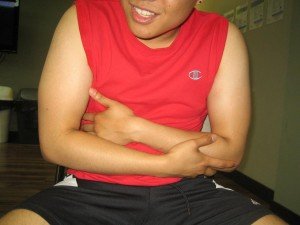Diverticulosis is characterized as the presence of several balloon-like sacs or diverticula in the large intestine. It is important to note that diverticula can develop anywhere in the large intestine but quite common in the sigmoid colon which is the last region just before the rectum.
Diverticulosis is considered uncommon before the age of 40 but can become common rapidly after. The giant-sized diverticula are rare which range from 1-6 inches in diameter.
What are the possible causes of diverticulosis?
The sacs are believed to be triggered by spasms of the muscle layer of the intestine. The exact cause for the intestinal spasms is still unknown but might be linked to a low-fiber diet. The ensuing pressure that these spasms place on the intestinal walls causes a region of the wall to protrude at an area of weakness, usually close to where an artery penetrates the muscle layer of the large intestine.
An increase in the density of the muscle layer is a usual finding in the sigmoid colon of an individual with diverticulosis. As for the exact cause of a giant diverticulum, it is still unclear.

What are the indications?
The diverticula are not considered dangerous. Actually, many individuals with diverticulosis do not have any symptoms. Nevertheless, diverticulosis can oftentimes cause unexplained painful cramping, blood-streaked stool and disturbances with the bowel movement.
The constricted opening of a diverticulum has a tendency to bleed, oftentimes heavily into the intestine and out via the rectum. This bleeding is usually painless. The bleeding can also occur if the stool becomes wedged into the diverticulum and damages a blood vessel. The stool that is ensnared in a diverticulum will not only trigger bleeding but also infection and inflammation, which leads to diverticulitis. In some cases, the bleeding can be significant which necessitates a blood transfusion.
Management
The objective of treatment for diverticulosis is to minimize the intestinal spasms which is ideally achieved by maintaining a high-fiber diet and increasing the intake of fluids.
Increasing the bulk in the large intestine can reduce the spasms which lowers the pressure placed on the large intestine walls. If a high-fiber diet is not effective, a diet that is supplemented on a daily basis with bran or a bulking agent such as psyllium can help.
An uncomplicated case of diverticulosis where there is no infection, inflammation or complications does not necessitate surgery. Most cases of bleeding stop without treatment but if it persists, the doctor will perform colonoscopy to clot the bleeding area using heat or laser or by injecting the area with a drug.
In case the bleeding recurs often or if the exact source of bleeding could not be determined, surgery is needed to remove some or the entire large intestine, but this surgery is not usually performed.
